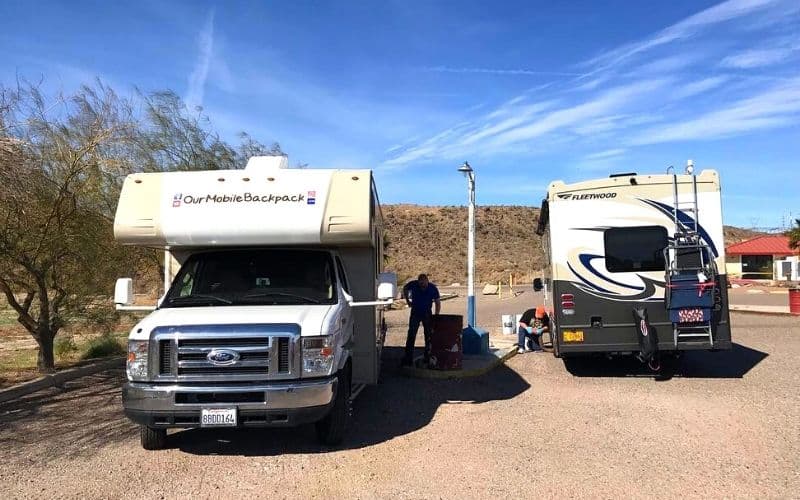There are plenty of good reasons to consider for leaving your RV plugged into shore power.
Some of the most popular include keeping the batteries topped up during cold weather to prevent freezing the internal electrolytes, as well as keeping power active in the RV for times when you might want to use it as a bunkhouse for overnight guests.
Though you might be wondering if it’s a bad idea to leave your RV plugged in all the time?
The reality is that leaving your RV plugged in all the time can cause some long-term problems. This can manifest in obvious ways, such as increasing your home’s energy costs, as well as potentially damaging your RV batteries.
Balancing the risk versus reward of leaving your RV plugged in all the time requires a closer look at how you intend to use your RV, and how much it could truly cost you in the long term.
How Much Does It Cost To Leave Your RV Plugged In All The Time?
As a ballpark figure, you can expect it to increase your utility costs by $10 to $30 per month.
This depends on the current electricity rates in your area, as well as how often you are using the batteries in the RV.
You can then balance this rough figure based on the reason you might want to leave your RV plugged in all the time. As well as the potential cost of the consequences.
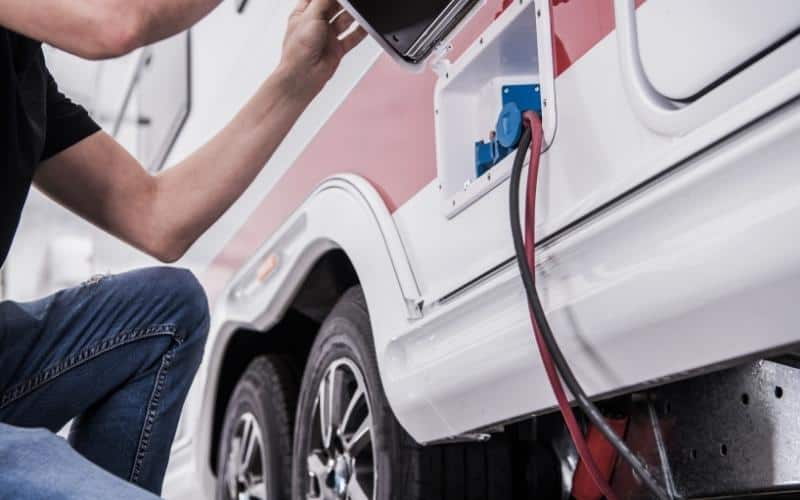
What Are Some Good Reasons To Leave An RV Plugged In?
Leaving your RV connected to some form of shore power ensures that the “House” battery bank inside the RV will always have the optimum level of charge. This can be handy for the following reasons.
1. Lights Are Always Available
An RV that’s plugged in will always have lights at the ready. This is especially handy if the RV is in storage and you want to use it to keep some seasonal storage items to keep from cluttering the house.
Alternative Option:
You can leave an all-weather power cable installed and ready to go when you need it. If you do need to go into the RV to retrieve something in the off-season, you can simply plug it in at a moment’s notice.
2. Keeping The Batteries Warm
It is possible in the deepest depths of winter for the electrolyte solution in lead-acid batteries to freeze, which can cause severe damage to the battery as well as lead to damaging acid leaks. Though this generally takes a long stretch of severely cold weather camping.
-
The Cost Of Replacing Damaged Batteries: Approximately $500 to $850.
-
Cost To Repair Acid Damage From Leaking Battery: $150 to $1,000 depending on the severity.
Alternative Option:
It is arguably more cost-effective to uninstall the batteries for winter and keep them stored in the house.
Then you can periodically charge them with a battery charger to maintain them during the off months of the year.
3. Using The RV As A Bunkhouse
If your home is small, or your kids love to have friends over for noisy sleepovers, the RV can be the perfect place for overnight guests to sleep in comfort, without having them invade your space.
Alternative Option:
You can plug the RV in the night before you expect guests to visit. This is more than enough time to let the batteries charge and will give them access to shore power.
All without risking damage to the RV house batteries as well as keeping your monthly utility rates reasonable.
4. Keeping The RV Interior Warm
Fully winterizing an RV is arguably a bit of a chore. If you leave your RV plugged in all the time, the thermostat, fan, and other components of the heating system can operate normally.
This will help keep fresh water lines and storage tanks from freezing. Though you will also incur propane and electricity costs, which can really add up throughout a long winter.
Alternative Option:
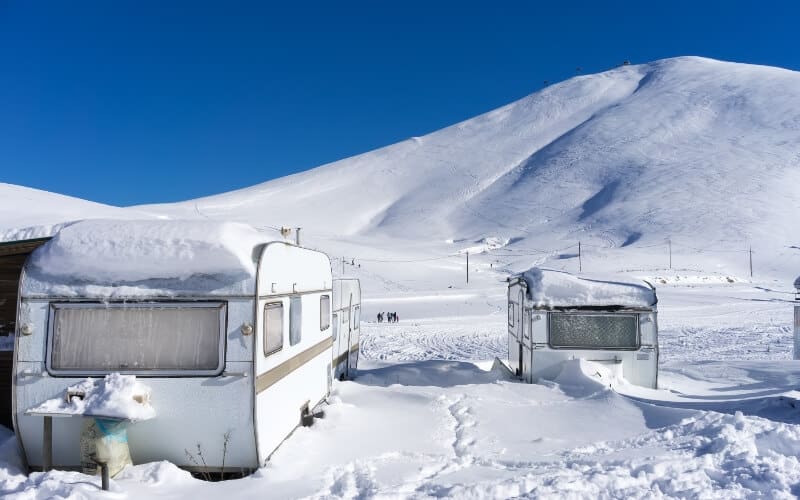
Pick a Saturday in the fall and put in the elbow grease to fully winterize your RV.
Not only will this prevent water lines and plumbing features from freezing, but it can also help prevent some of the other costly damage that winter can wreak on an improperly stored RV.
If you are worried about keeping the interior warm for other reasons that can’t be resolved by properly winterizing your RV, you might want to install one or two oil-filled radiators.
These are low-wattage heating appliances that don’t have the fire risks of a traditional space heater.
You set them to a specific temperature range and an internal heating element warms a special type of polymer or oil inside.
This then exudes ambient heat to the surrounding air, all with much less power and propane consumption that comes with running the RV’s furnace.
5. Running The Air Conditioning System
In hot and humid climates severe humidity can damage upholstery and other interior components.
Keeping an RV plugged in during the hottest months of the year can help prevent these problems.
- Cost Of New RV Upholstery: $250 to $500 per furniture item.
Alternative Option:
While you might not be able to let your RV sit without the AC running in the hottest and most humid months of the year, you can reduce the amount of power the rooftop air conditioner uses by placing a cheap home dehumidifier inside your RV.
This will help draw out the moisture, allowing you to run the RV’s power-guzzling rooftop air conditioner at a lower setting.
This will also help reduce the wear and tear on the RV’s rooftop air conditioner components.
6. Extra Refrigerator Space
Many RV owners like to use their RV as additional storage to help augment their home refrigerator when the RV is being stored in the yard during the off-season.
When storing the RV during the travel months of the year it can be handy to leave the RV refrigerator running to spare you the hassle of having to lug condiments and other common perishable food items back and forth with every trip.
Alternative Option:
If you want to keep your RV refrigerator stocked and cold, you can set an absorption refrigerator to run on propane when not in use.
If your RV has a conventional compressor-based refrigeration system like a residential refrigerator, you might want to plug it directly into an extension cord.
This way the RV refrigerator stays cold and running without having to power the rest of the RV or risk damaging the electrolyte levels in the RV’s house batteries.
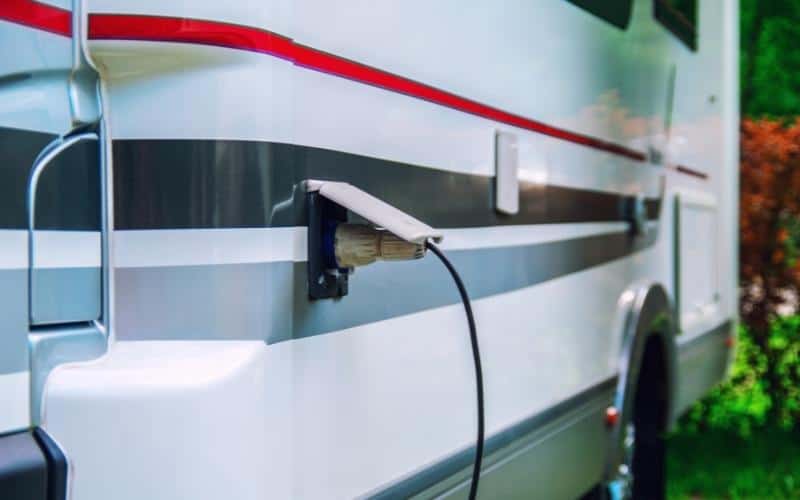
Can Leaveing An RV Plugged In All The Time Cause Damage?
There counterpoint to leaving an RV plugged in all the time is the potential wear and tear and costly damage it can potentially cause.
This goes beyond the simple cost of increasing your monthly utility bill to causing some real long-term problems with your RV’s electrical system and house batteries.
The following things can be potential hazards or cause costly damage to your RV.
The Air Conditioning System
Running the RV rooftop air conditioner all the time at full can cause excess wear and tear to critical components.
This can lead to more serious RV air conditioning malfunctions where you take it out on the road.
Mold complications can also be an issue with an overtaxed RV air conditioner. Excess moisture that builds up around the condenser can become a prime breeding ground for mold.
This can be a health hazard in the short-term as well as cause long-term structural damage to porous materials in the area.
Possible Prevention Tip:
Installing a modest-sized residential dehumidifier in the RV’s interior will help keep ambient humidity levels low while using far less power than the massive rooftop RV air conditioner.
In severe heat and humidity, you can run the AC system at a much lower setting with a dehumidifier working in tandem.
Overcharging Damaging The RV House Batteries
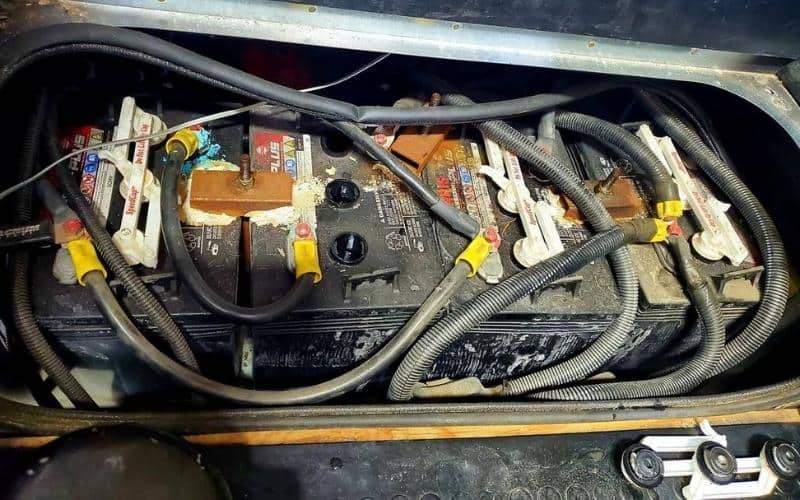
If you do happen to leave your RV’s house batteries plugged in for too long after they reach full charge, the heat and current can start to deplete the cells’ electrolyte levels. This can lead to reduced battery life.
In a severe case, it can even cause a failure in the lead-acid battery’s protective case, which can cause dangerous battery acid to spill out damaging wiring and other surrounding materials in your RV.
One of the best ways to prevent this from happening is to use a three or four-stage charging process.
Also known as a “Smart Charger” it acts as a battery tender that monitors the charge inside the battery and disengages the charging process as the battery nears full charge.
Should the electrolyte levels in lead-acid batteries decrease due to overcharging, you might be able to restore them by adding a little distilled water.
Though this is something you can only do one or two times in the life of an RV’s lead-acid house battery.
Possible Prevention Tip
Try to run any necessary appliances via a common extension cord. You can then leave the rest of the electrical system disconnected.
If this isn’t an option, you should make it a point to periodically test the batteries to make sure they are operating properly.
This includes testing it with a multi-meter to ensure they are holding 12-Volts, as well as checking the internal electrolyte levels at least once a month.
You might want to also invest in a “Smart Charger” that you can run off an extension cord.
This type of charger monitors the ambient charge inside the lead-acid batteries and stops charging them when they reach 95% or more of charge.
This way the batteries are always topped up when you need them to be, without them being constantly overcharged.
Conclusion
There are some good reasons for wanting to keep your RV plugged in all the time.
Though they might have long-term consequences that are more costly than simply the increase in your monthly utility bill.
Fortunately, with some forethought, you can prevent problems with overtaxing appliances and climate control systems as well as minimizing potential long-term damage to the components and electrolyte levels of your RV’s house batteries.
This starts with making sure your RV is always properly winterized to minimize the need to power it against the elements.
If you do need to keep the batteries topped up, think about using a smart charger and then monitor the batteries closely.
If you need to keep the interior warm or you need to minimize the risks posed by severe humidity.
Think about using energy-efficient appliances like oil-filled radiators and home dehumidifiers.
This will reduce the wear and tear on the RV’s furnace and rooftop air conditioning system.
In the long run, using these simple strategies and taking the steps to properly maintain your RV when not in use, will reduce your risk of suffering an unnecessary breakdown when you are ready to hit the open road. It can also help shave down your monthly utility costs!

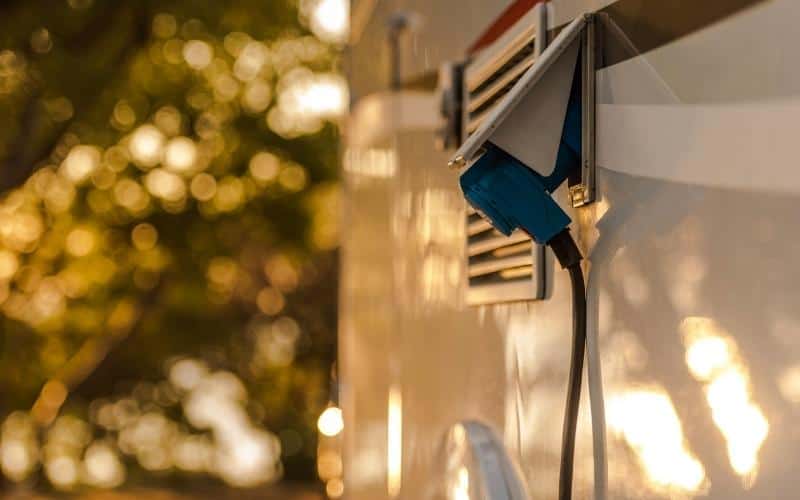

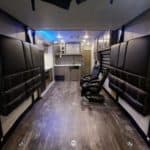
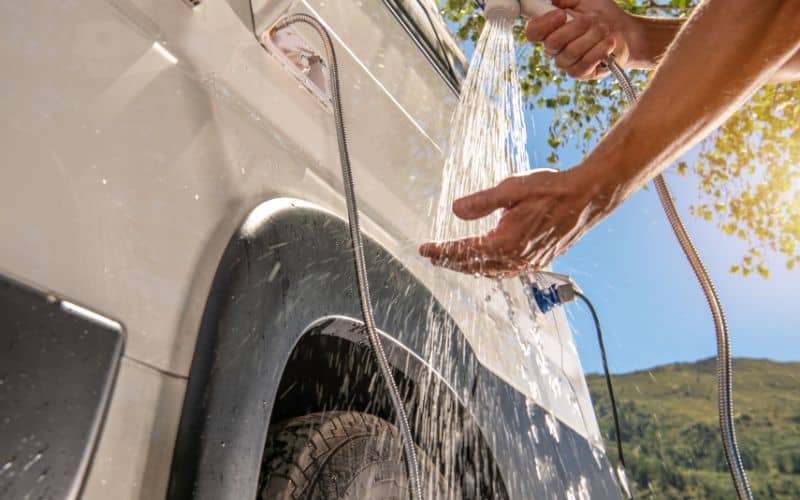
![The Top 12 Travel Trailer Brands Of [currentyear] 9 Top 12 Travel Trailer Brands Of 2024](https://www.rvingknowhow.com/wp-content/uploads/2019/11/Dream-Home-For-Campers_-11-Best-Travel-Trailer-Brands-Review-Guide.jpg)
